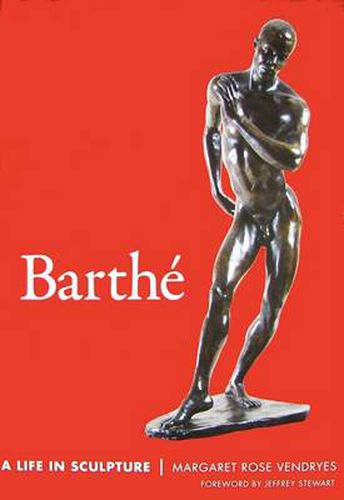Readings Newsletter
Become a Readings Member to make your shopping experience even easier.
Sign in or sign up for free!
You’re not far away from qualifying for FREE standard shipping within Australia
You’ve qualified for FREE standard shipping within Australia
The cart is loading…






Richmond Barthe (1901-1989) was the first modern African American sculptor to achieve real critical success. His accessible naturalism led to unprecedented celebrity for an artist during the 1930s and 1940s. After four years of academic training at the School of the Art Institute of Chicago, Barthe reaped the benefits of the 1920s New Negro Arts Renaissance. He also endured difficulties as a gay, Roman Catholic, Creole sculptor working during the nation’s post-World War II era. He gave his black subjects in particular an intensity and sensuality that attracted important European American patrons and the press. Much of Barthe’s biography is recorded here for the first time in tandem with analyses and interpretations of his sculpture. Born to Creole parents in Bay St. Louis, Mississippi, Barthe’s art brought him out of poverty. At the height of his fame, he was often criticized for not talking about injustices African Americans faced. He expected his art to speak not only for itself, but also for him. He fled the United States for an expatriate’s life in Jamaica only to learn that, as an artist and a black man, he could not be accepted on his own terms, and there was no such thing as a perfect home. Barthe: A Life in Sculpture reveals the breadth of Barthe’s oeuvre through readings of his figurative masterworks that attest to accomplishments in a life lived well beyond race.
$9.00 standard shipping within Australia
FREE standard shipping within Australia for orders over $100.00
Express & International shipping calculated at checkout
Richmond Barthe (1901-1989) was the first modern African American sculptor to achieve real critical success. His accessible naturalism led to unprecedented celebrity for an artist during the 1930s and 1940s. After four years of academic training at the School of the Art Institute of Chicago, Barthe reaped the benefits of the 1920s New Negro Arts Renaissance. He also endured difficulties as a gay, Roman Catholic, Creole sculptor working during the nation’s post-World War II era. He gave his black subjects in particular an intensity and sensuality that attracted important European American patrons and the press. Much of Barthe’s biography is recorded here for the first time in tandem with analyses and interpretations of his sculpture. Born to Creole parents in Bay St. Louis, Mississippi, Barthe’s art brought him out of poverty. At the height of his fame, he was often criticized for not talking about injustices African Americans faced. He expected his art to speak not only for itself, but also for him. He fled the United States for an expatriate’s life in Jamaica only to learn that, as an artist and a black man, he could not be accepted on his own terms, and there was no such thing as a perfect home. Barthe: A Life in Sculpture reveals the breadth of Barthe’s oeuvre through readings of his figurative masterworks that attest to accomplishments in a life lived well beyond race.